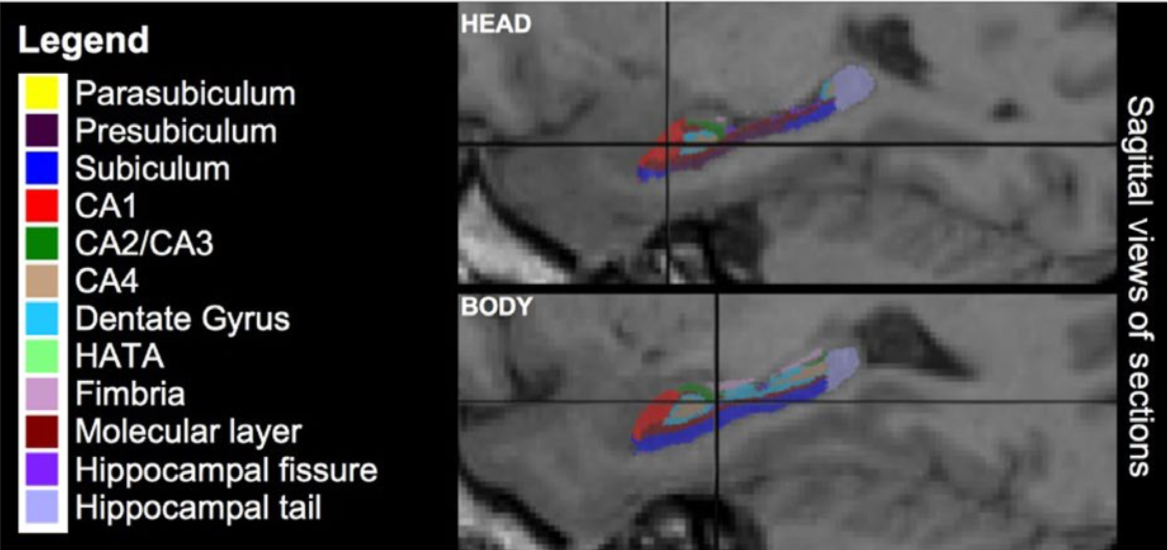Hippocampal subfield segmentation in temporal lobe epilepsy: Relation to outcomes

Abstract
Objective: To investigate the clinical and surgical outcome correlates of preoperative hippocampal subfield volumes in patients with refractory temporal lobe epilepsy (TLE) using a new magnetic resonance imaging (MRI) multisequence segmentation technique. Methods: We recruited 106 patients with TLE and hippocampal sclerosis (HS) who underwent conventional T1‐weighted and T2 short TI inversion recovery MRI. An automated hippocampal segmentation algorithm was used to identify twelve subfields in each hippocampus. A total of 76 patients underwent amygdalohippocampectomy and postoperative seizure outcome assessment using the standardized ILAE classification. Semiquantitative hippocampal internal architecture (HIA) ratings were correlated with hippocampal subfield volumes. Results: Patients with left TLE had smaller volumes of the contralateral presubiculum and hippocampus‐amygdala transition area compared to those with right TLE. Patients with right TLE had reduced contralateral hippocampal tail volumes and improved outcomes. In all patients, there were no significant relationships between hippocampal subfield volumes and clinical variables such as duration and age at onset of epilepsy. There were no significant differences in any hippocampal subfield volumes between patients who were rendered seizure free and those with persistent postoperative seizure symptoms. Ipsilateral but not contralateral HIA ratings were significantly correlated with gross hippocampal and subfield volumes. Conclusions: Our results suggest that ipsilateral hippocampal subfield volumes are not related to the chronicity/severity of TLE. We did not find any hippocampal subfield volume or HIA rating differences in patients with optimal and unfavorable outcomes. In patients with TLE and HS, sophisticated analysis of hippocampal architecture on MRI may have limited value for prediction of postoperative outcome.